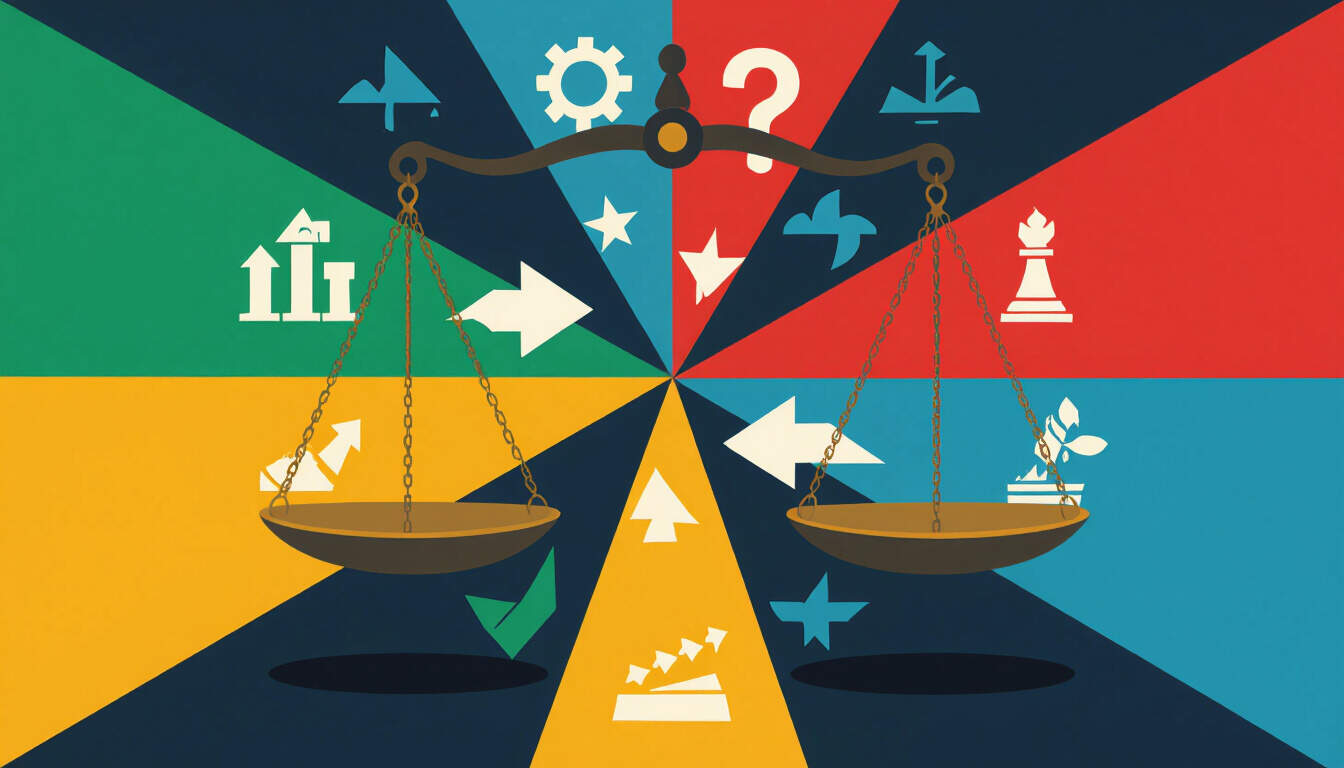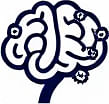Nash Equilibrium: A Key Mental Model for Strategic Decision-Making
 by Thaddeus Blanda
by Thaddeus Blanda
Nash Equilibrium offers a framework for understanding stable outcomes in competitive scenarios. This mental model helps in psychology and business by predicting behaviors where no one gains from unilateral changes, fostering better strategies and cognitive growth.

Nash Equilibrium is a fundamental concept that arises in strategic interactions. It describes a situation where individuals or groups, after choosing their best responses, find themselves in a state where no one can improve by acting alone. This idea stems from game theory, providing insights into how decisions play out in various fields.
In its basic form, Nash Equilibrium involves players in a game, each selecting strategies that maximize their outcomes based on what others do. For instance, imagine two companies deciding on pricing for similar products. If both set prices at a certain level, neither benefits from lowering or raising theirs, assuming the other stays put. This creates a balance that reflects real-world dynamics in markets and negotiations.
To grasp this further, consider everyday examples. In economics, firms might reach a point where advertising spends stabilize because increasing efforts does not yield extra profits if competitors respond similarly. Decision making in such cases relies on anticipating reactions, making Nash Equilibrium a tool for predicting stability.
Moving to applications in psychology, this mental model sheds light on social behaviors. People often engage in interactions where cooperation or conflict emerges naturally. For example, in group settings, individuals might choose actions that avoid escalation, leading to outcomes where everyone sticks to their choices. This highlights how cognitive development benefits from recognizing these patterns, as it encourages thinking ahead about potential responses.
Why This Model Matters in Business
Business strategies frequently draw from Nash Equilibrium to analyze competitive landscapes. Leaders use it to evaluate market entry, pricing wars, or partnerships. Suppose a new entrant considers disrupting an industry; they must weigh if their move will provoke reactions that neutralize advantages. Over time, this leads to balanced strategies that sustain operations.
In practice, applying this model involves mapping out possible moves and counter-moves. Businesses can simulate scenarios to identify points of equilibrium, ensuring long-term viability. For professionals, incorporating such tools sharpens analytical skills, turning abstract ideas into actionable plans.
Connections to Personal Growth
On a personal level, Nash Equilibrium aids in resolving conflicts or making choices in relationships. When negotiating agreements, individuals aim for arrangements where no party feels compelled to deviate. This promotes fairness and stability, essential for healthy interactions.
For lifelong learners, exploring this concept enhances problem-solving abilities. By viewing decisions through this lens, one can better navigate interpersonal dynamics or even personal finances. It encourages a mindset focused on mutual outcomes, fostering resilience and adaptability.
Practical Steps to Apply Nash Equilibrium
- Identify key players and their potential strategies in any situation.
- Assess outcomes based on different combinations of actions.
- Determine if a stable point exists where changes do not benefit anyone.
- Test assumptions through simple simulations or discussions.
These steps make the model accessible, allowing curious minds to experiment with it in daily life. Whether in team projects or personal goals, recognizing equilibrium points leads to more effective planning.
In education and training programs, exercises often incorporate this idea to build strategic thinking. Participants learn to evaluate scenarios, improving their ability to handle uncertainty. This ties back to broader themes in psychology, where understanding human behavior patterns supports personal evolution.
Limitations and Considerations
While powerful, Nash Equilibrium does not cover every scenario. Some situations involve incomplete information or irrational choices, which can disrupt expected balances. Recognizing these limits is crucial for a nuanced approach.
Despite such drawbacks, the model's value lies in its simplicity and wide applicability. It serves as a foundation for more advanced analyses, helping individuals refine their mental toolkit.
Overall, embracing Nash Equilibrium enriches one's perspective on interactions. It equips professionals and learners with a practical framework for achieving stability in a variety of contexts, ultimately supporting growth and informed choices.
